Best wind resistant shrubs – 10 plants that bring protection as well as color to your yard
These shrubs can resist strong winds while adding structure and interest to the garden
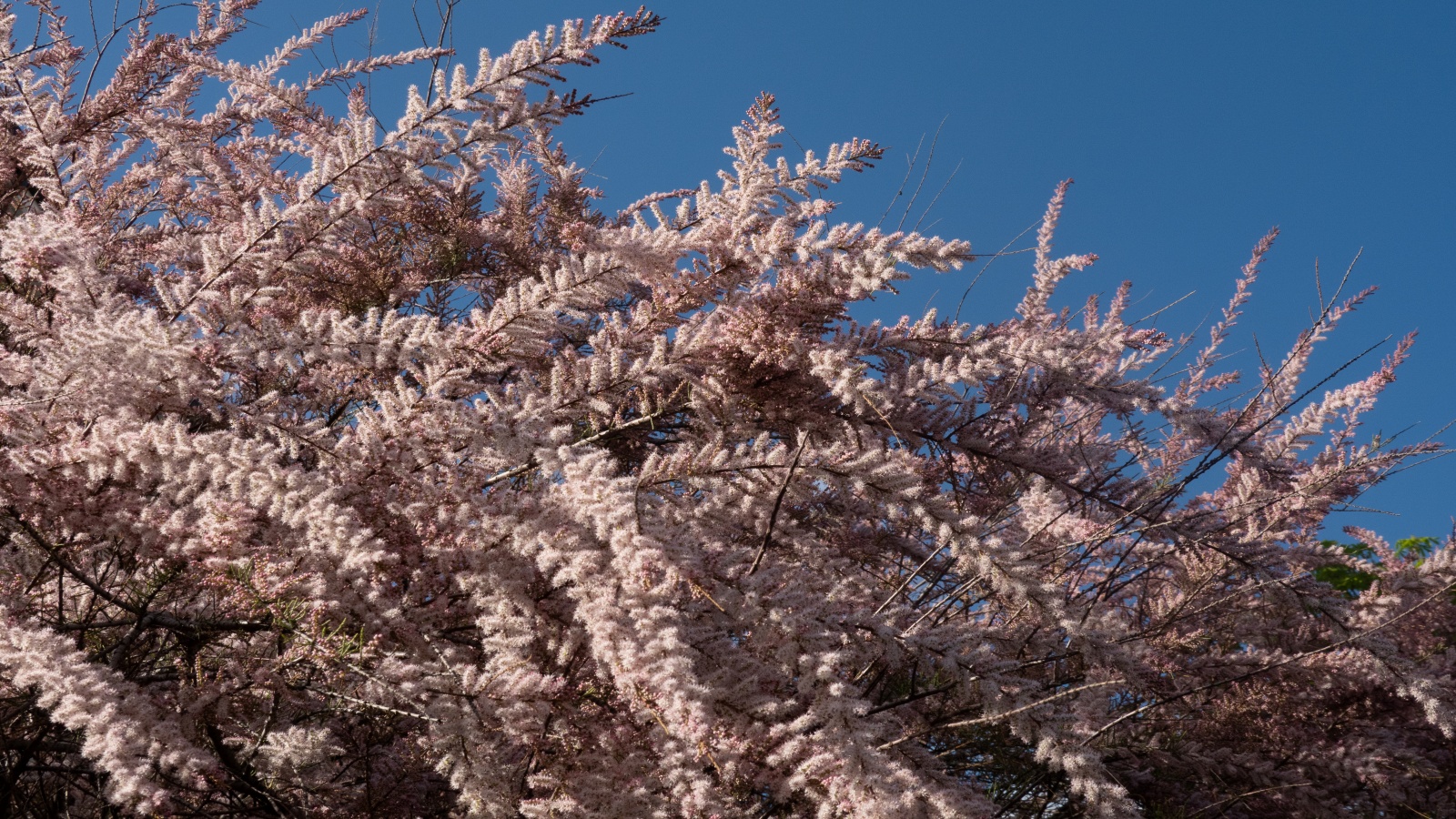

Violent and destructive storms are becoming increasingly common, and in order to make our yards more climate-resilient we need to choose plants that can withstand the worst the elements can throw at them.
Wind-resistant shrubs play an important role in my hilltop garden. We use them for protection and the varieties here provide color and interest, as well as flowers and berries from the spring through to late fall.
Some are easy-going evergreen shrubs, while others lose their leaves and provide an interesting skeleton throughout the winter months. Whatever hardiness zone you live in, there will be shrubs you can use to act as a windbreak in your yard, offering protection to the other plants and structures. Here I suggest 10 of the best wind-resistant shrubs that will protect and enliven your yard from January through to December.
1. Viburnum tinus
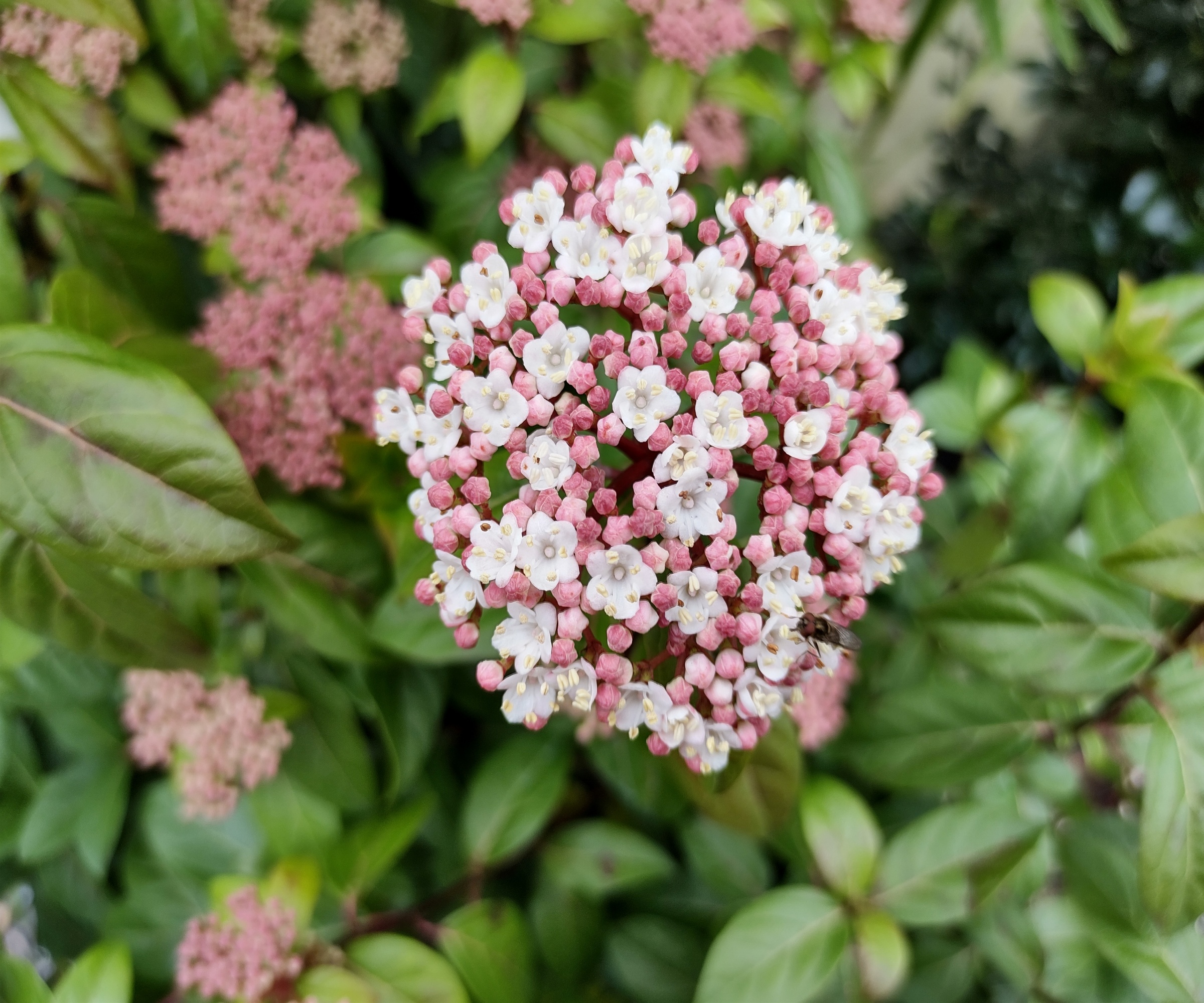
Evergreen Viburnum tinus 'Eve Price' has colorful flowers in spring and black fall berries
All varieties of Viburnum are low-maintenance shrubs that give year-round interest and protection to exposed areas of the yard.
The evergreen variety ‘Eve Price’ can be grown in US hardiness zones 8-10, it will reach 5-6ft when mature and produces an attractive froth of white flowers in spring followed by blue/black winter berries.
Like all viburnums, it is a fast-growing shrub and it's year-round beauty makes it one of the best landscaping shrubs, as it forms a dense, wind-resistant hedge that is perfect for exposed yards. It's also a bonus for gardeners looking for shrubs to create privacy around their plot.
Plant in early spring or the fall in a sunny spot and water well while your plant gets established. Prune annually to keep the shrub in shape and flowering well.
Design expertise in your inbox – from inspiring decorating ideas and beautiful celebrity homes to practical gardening advice and shopping round-ups.
Viburnum tinus shrubs are available at Amazon.
2. Elaeagnus
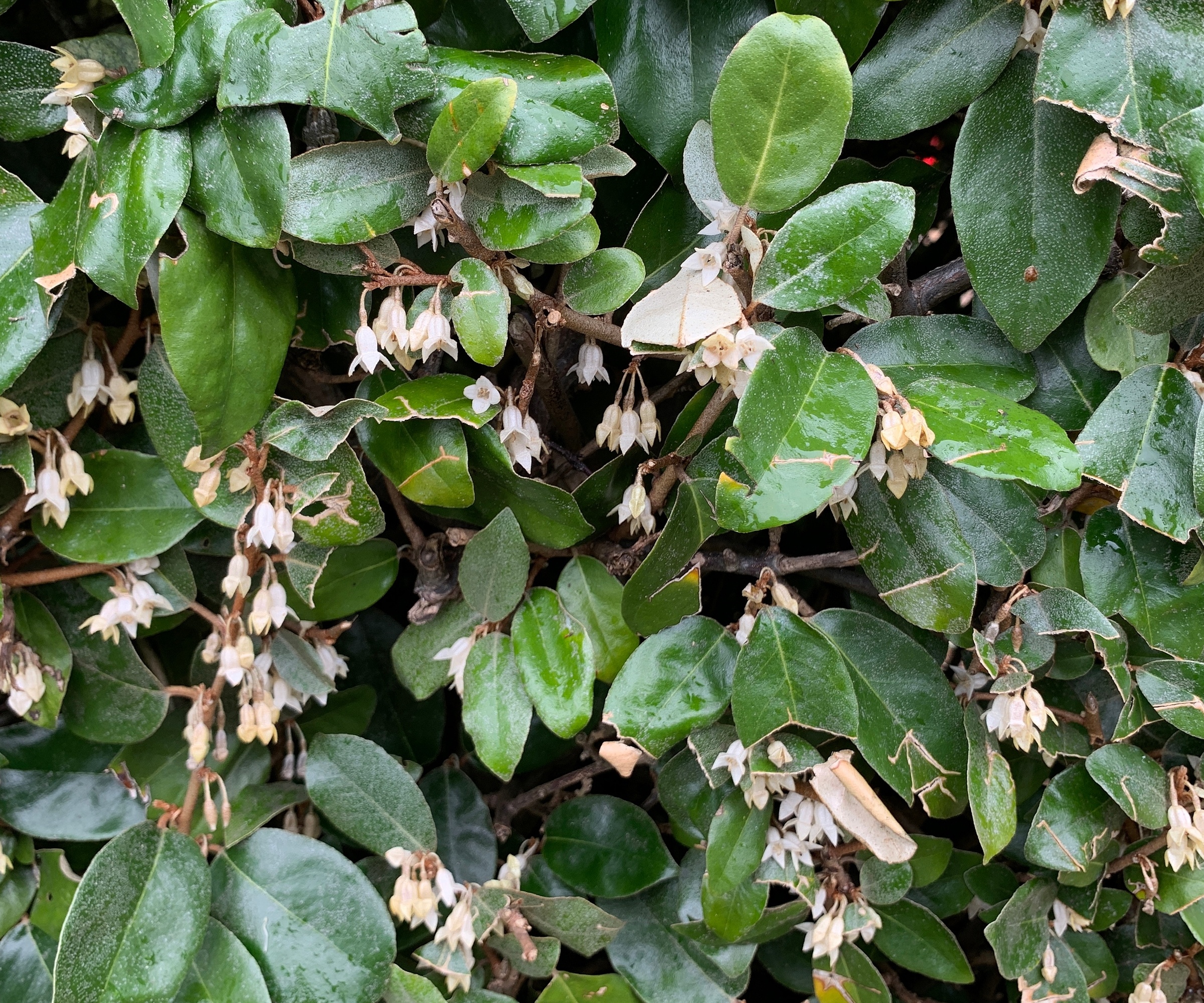
Robust Elaeagnus has sweet small flowers with a gorgeous scent, making it a great shrub for sheltering a seating area
Widely regarded as one of the best hedging plants, elaeagnus is a fast-growing shrub with a good tolerance for salty air, making it ideal when planning a hedge for privacy or a coastal garden.
Also known as thorny olive, spiny oleaster and silverthorn, eleagnus has tough, leathery leaves and beautifully scented flowers, making it the perfect screen for a seating area or patio.
It is happy in most soils as long as it is free draining, as constant wet around the roots can cause rotting. It is also happy in sun and shade, though will grow faster and stronger in a bright spot.
Eleagnus is hardy to zone 3 and plants are available from Walmart.
3. Griselinia
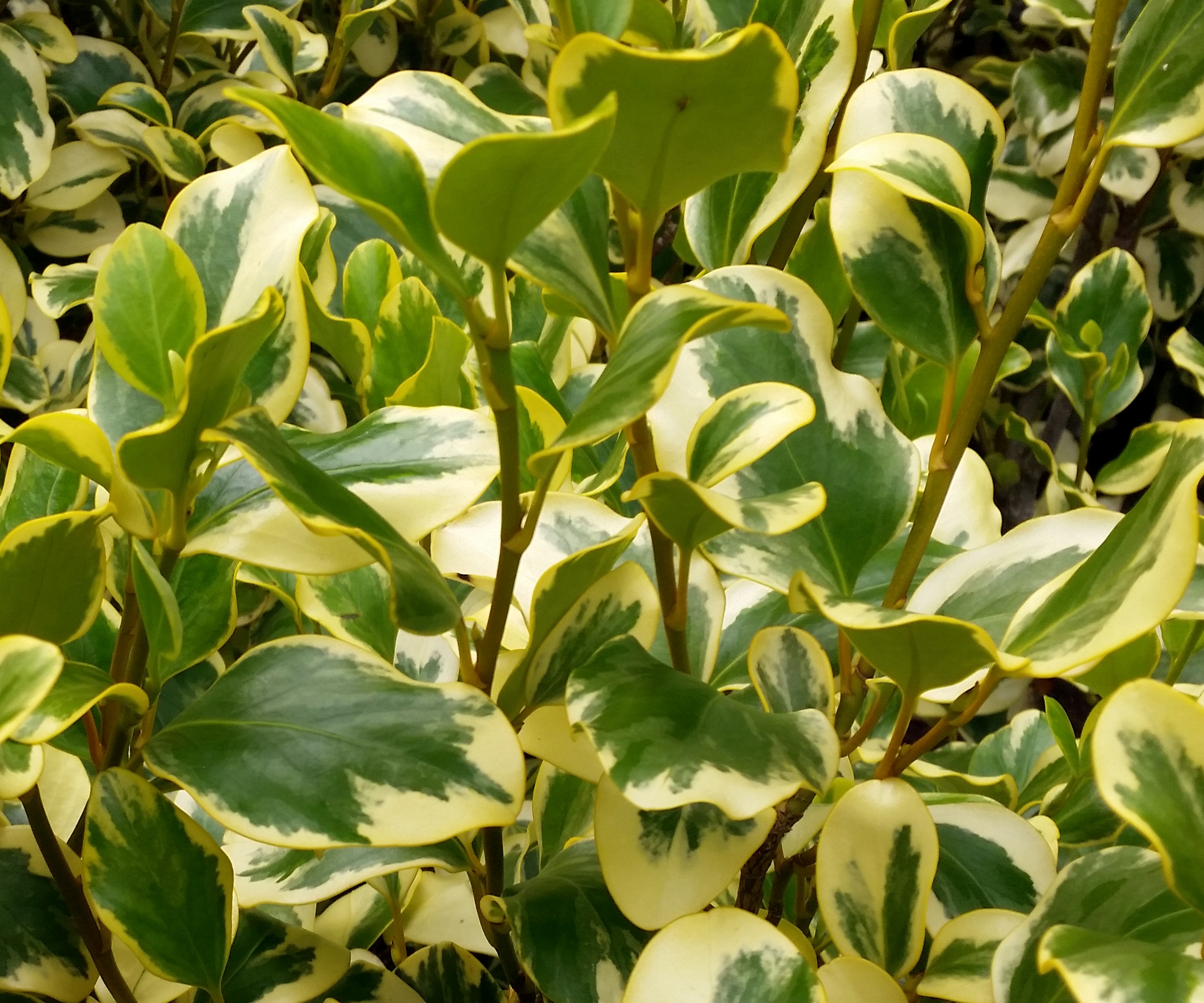
Griselinia littoralis 'Variegata' has glossy leaves and provides excellent protection from high winds
We have a griselinia hedge on one side of our drive and I’m mightily glad we do. It protects that side of the yard from the winds that often batter our hilltop home, and its glossy, bright green leaves look cheerful on even the most dismal days.
The leaves are resistant to windburn and griselinia likes a sunny spot. Its full name is Griselinia littoralis, and as this suggests, it also thrives in exposed coastal areas.
This shrub is perfect for a low-maintenance planting scheme too, as it is happy in most soils and only needs a light prune once a year, between late spring and midsummer, to keep it in shape.
It will thrive in hardiness zones 7 and 8.
4. Mahonia 'Soft Caress'
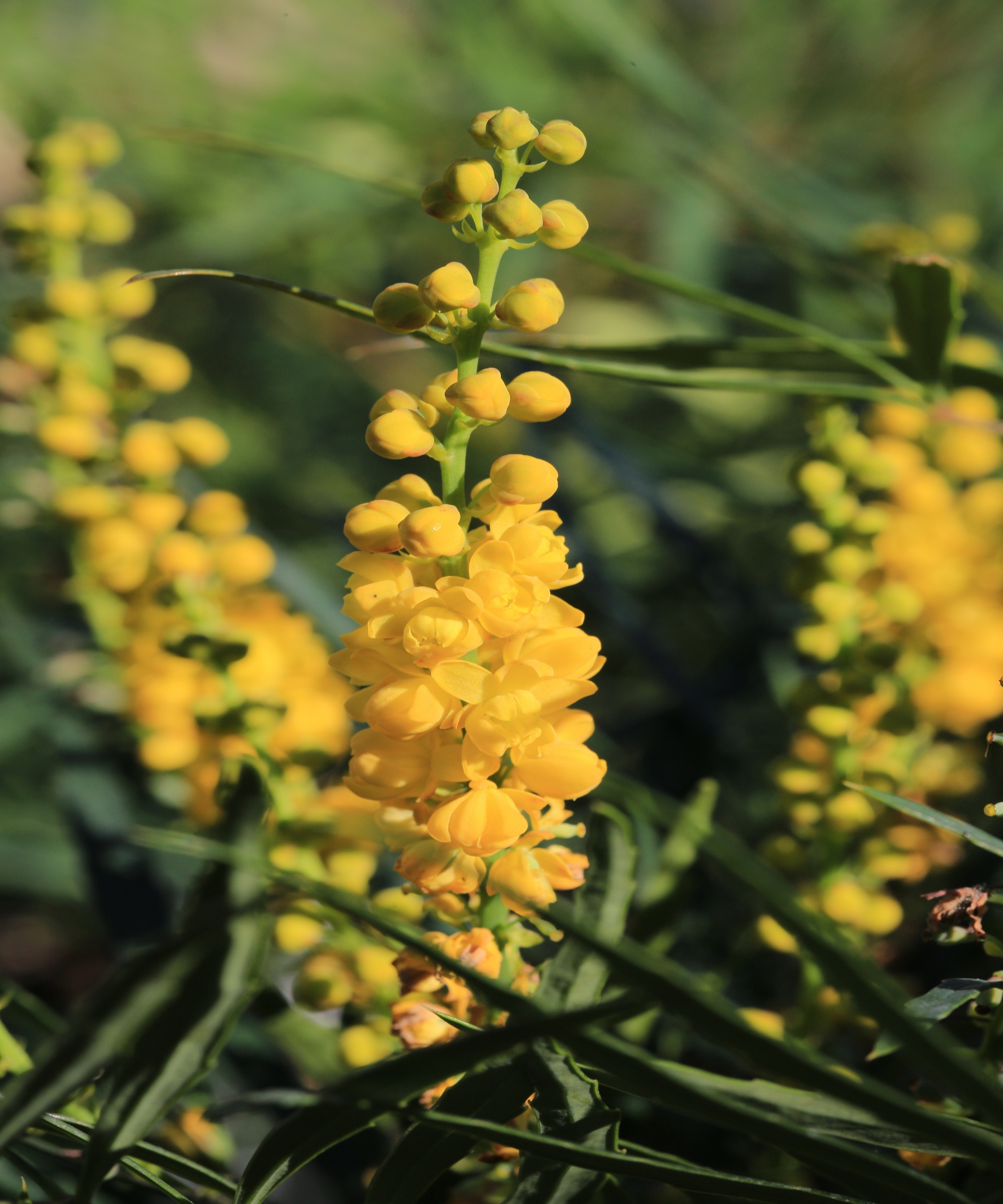
Shade-tolerant Mahonia 'Soft Caress' has striking flowers and soft foliage
This member of the barbary family is perfect for windy yards and small yards in hardiness zones 7-9. It will grow well in shade, where its joyous yellow flowers can shine out during the coldest months making it a great addition to your winter garden ideas.
This mahonia variety is a compact variety growing to 3ft, with soft, non-spiky leaves that make it suitable for a family garden with children and pets.
Because it is one of the best shrubs for shade, it can be planted on the north side of a yard where other plants sometimes struggle, and because its roots are far-reaching it doesn't need constant watering once it has got established.
During very cold winters you might find that the leaves of ‘Soft Caress’ turn an attractive shade of red or bronze, but fresh green growth will replace this in the spring.
Mahonia 'Soft Caress' is available from Amazon.
5. Cotoneaster horizontalis
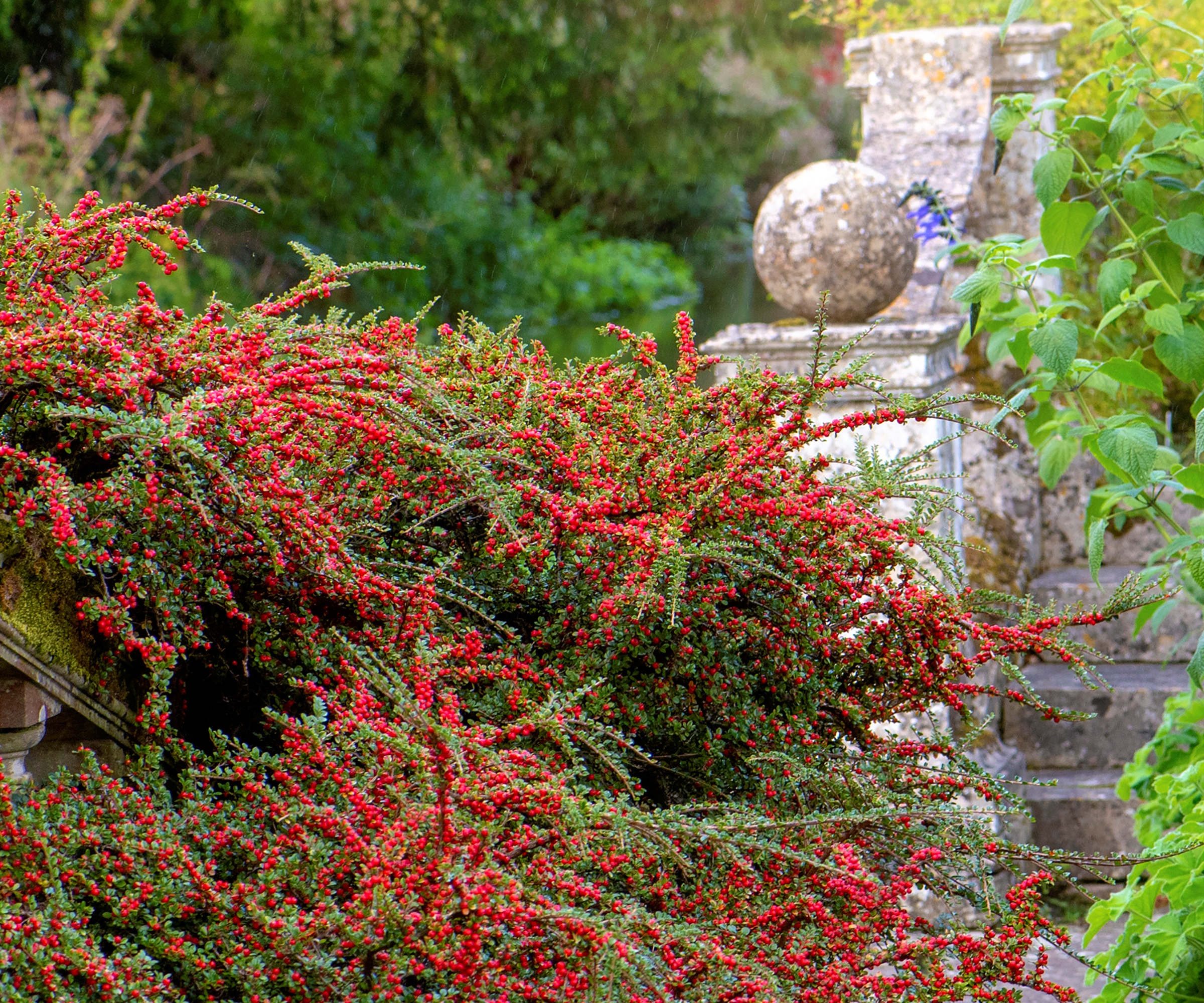
Cotoneaster horizontalis is a good choice to soften landscaping and attract garden birds
Prostrate and low-growing shrubs are obviously perfect for windy gardens and this lovely cotoneaster is also worth adding to your rock garden ideas.
It is deciduous, with small, dark, glossy leaves, and a wealth of sweet white flowers in spring and is one of the best shrubs for fall berries, which will bring hungry birds into your yard.
As a useful groundcover plant to stop weeds, it will also help suppress weeds and allow the soil to hold onto its moisture, preventing it from drying out.
Cotoneaster horizontalis is also known as rock cotoneaster, and it grows well alongside other rock garden plants, which it won't swamp thanks to its ground-hugging characteristics. It is suited to hardiness zones 5-7.
Cotoneaster horizontalis plants are available from Amazon.
6. Hawthorn (Crataegus monogyna)
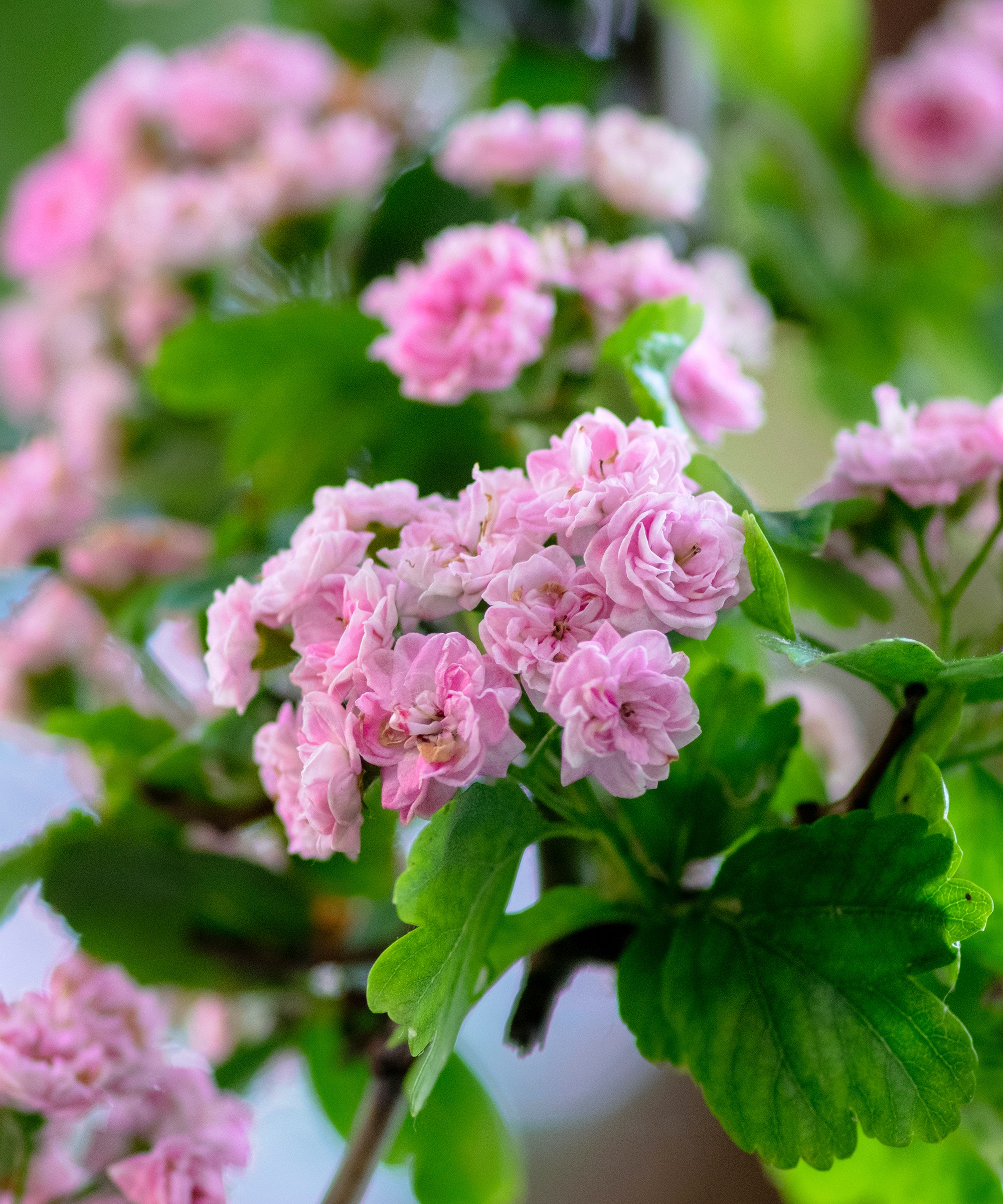
Hawthorn such as the pink-flowered variety 'Paul's Scarlet' is extremely wind-resistant
Tough, weather-resilient hawthorn has a multitude of uses. It is fast growing, so perfect as a hedging plant for privacy, its thorns also make it suitable to plant for home security and its shiny red fall berries and dense branches provide food and shelter for garden birds in winter.
As well as being an excellent hedging plant, hawthorn also works well as a sculptural standalone shrub, its white or pink blossom shining out in the spring sunshine.
Hawthorn can be grown in zones 4-8 and there are many different cultivars to suit all sizes of yard.
The variety ‘Compacta’ grows only to 8ft, making it a perfect shrub for small gardens and containers, while the pretty pink flowered ‘Rosea Flore Pleno’ can reach 26ft.
7. Tamarix (Tamarisk)
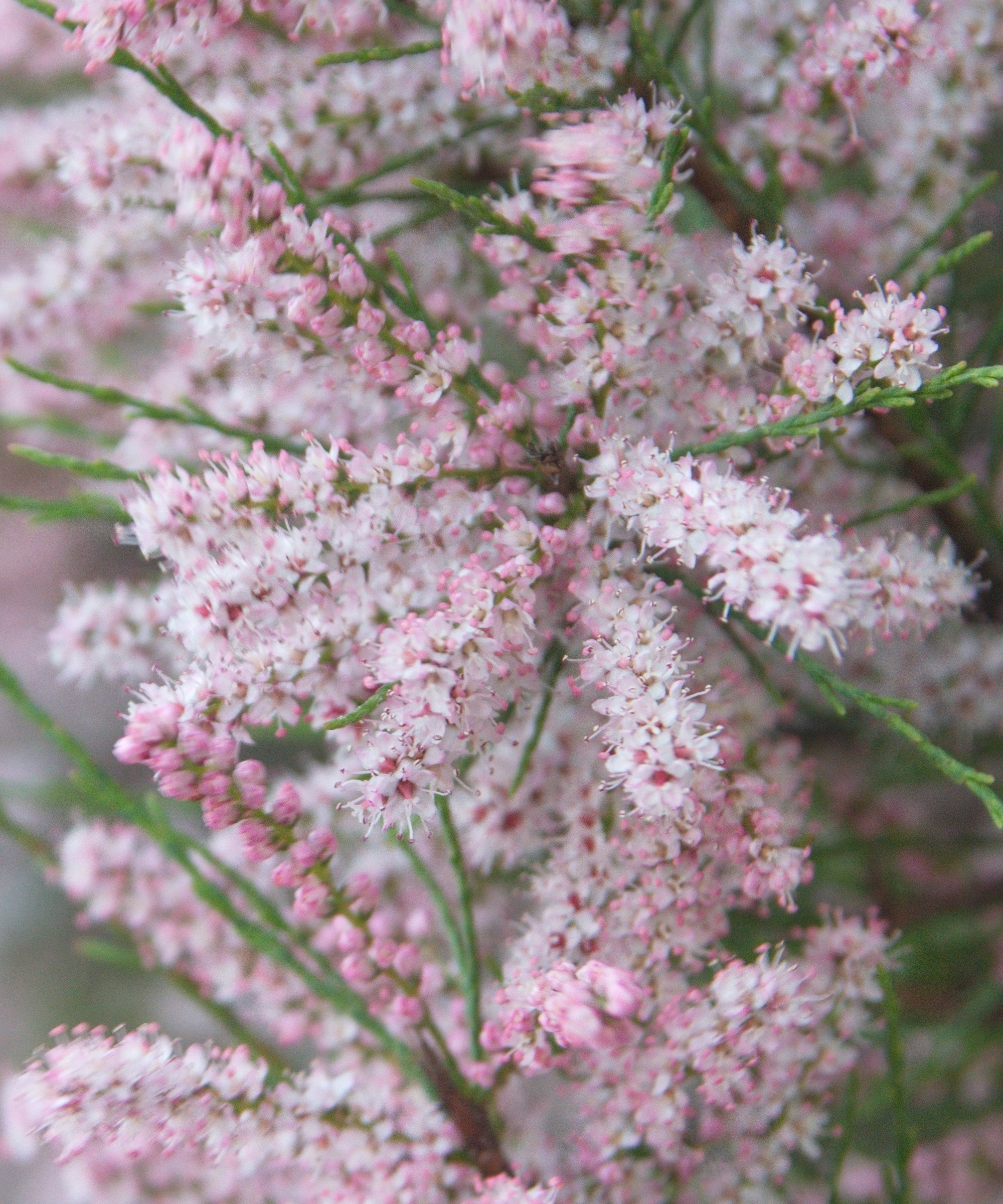
Tamarix or Tamarisk can handle high winds and is also an excellent choice for coastal gardens
Tamarix or tamarisk is a truly robust plant that can handle high winds and would be my go-to shrub to use as a windbreak when planning a coastal garden.
They like full sun, won’t grow well in a shady yard, and are hardy to zone 4. Despite their toughness they are extremely elegant, with long feathery branches that are clad in delightful pink flowers in spring and summer.
This is a low-maintenance shrub that doesn't need much water once they have rooted down and got established.
Tamarisk seeds are available from Amazon.
8. Holly
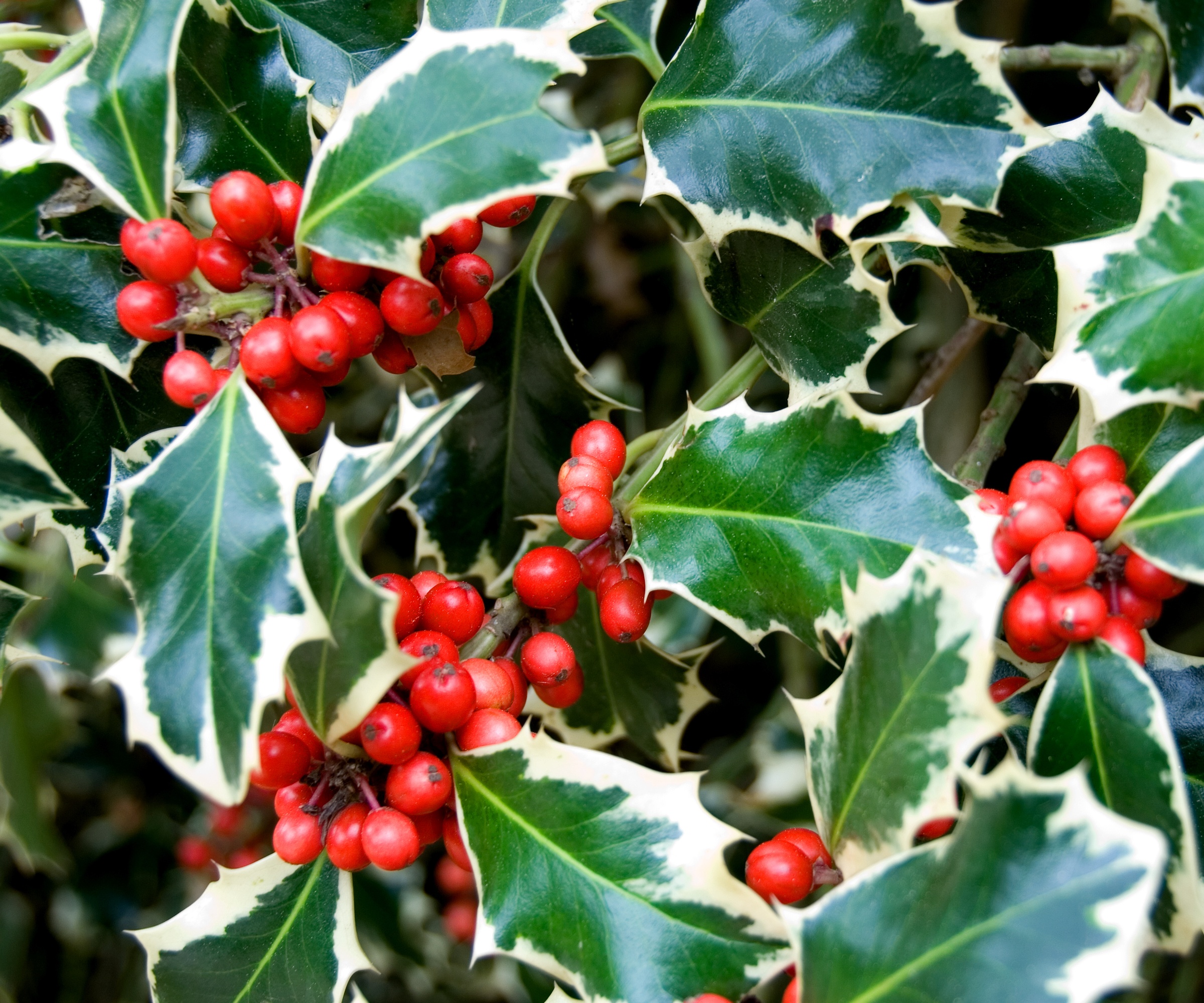
Holly adds year-round interest, is an excellent hedging plant and garden birds love its berries
Holly can not only withstand high winds, its glossy, evergreen leaves look attractive all year round and its berries add bright pops of color to the winter yard.
This is a plant that thrives in soil that is slightly acidic and drains well, though we have two plants growing very well in our chalky yard. Full sun is ideal, but this is a tough species and will grow in most places, so it will tolerate some shade as well.
If you want your holly to have berries, remember to grow both male and female plants.
Blue Maid Meserve Holly, known scientifically as Ilex x meserveae 'Mesdob,' is a beautiful evergreen shrub. It grows well in full sun or partial shade.
A well-liked option for gardens is the Blue Prince Holly (Ilex x meserveae 'Blue Prince'). This is a male holly shrub that works well with female plants for pollination.
9. Rosemary
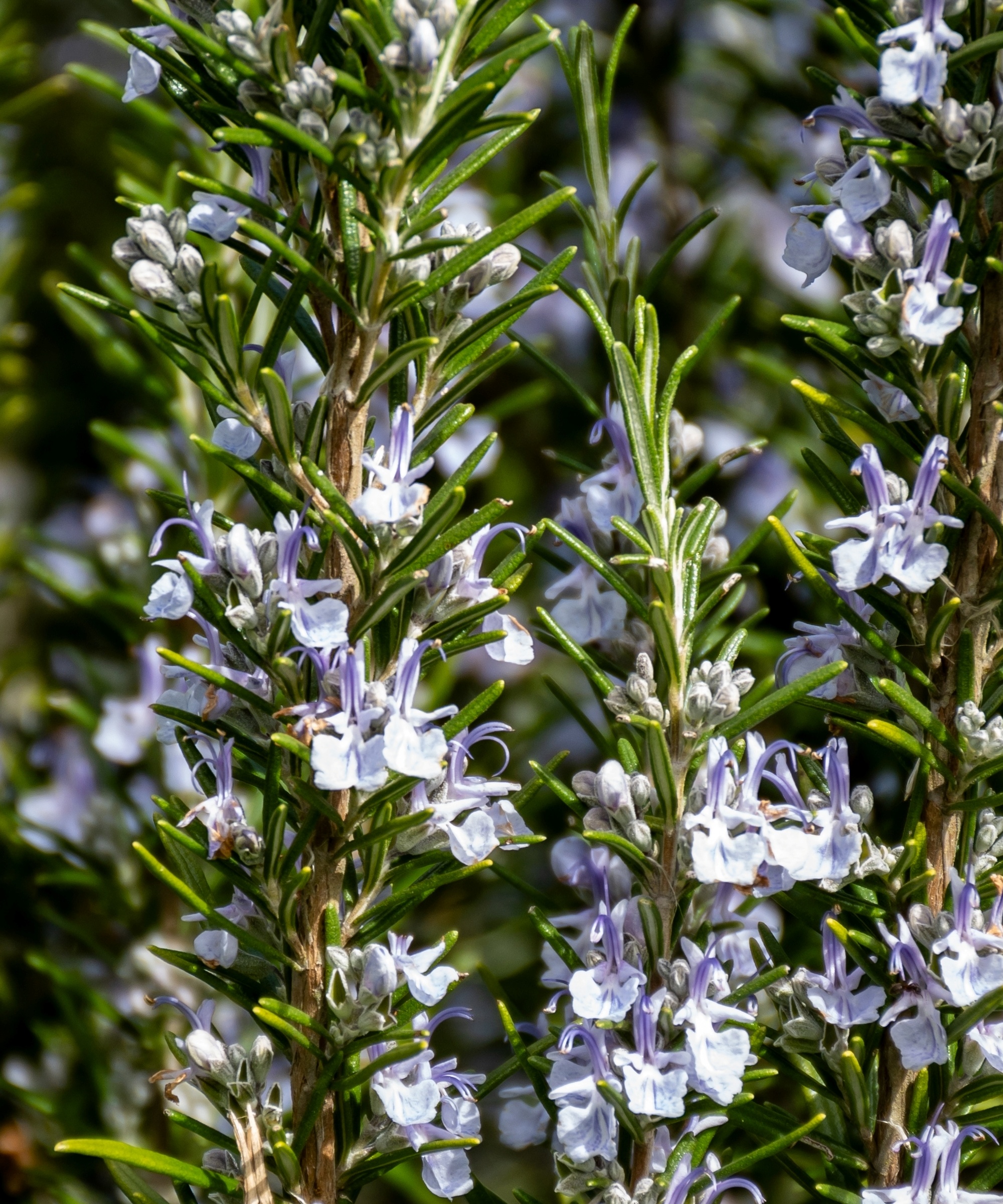
Rosemary is a useful culinary plant with attractive pale blue flowers are good wind tolerance
Rosemary is a robust, woody herb that has upright and prostrate forms. It grows in zones 8 to 10, doesn't need winterizing, can tolerate windy yards and once established, thrives in poor soils that don’t get much water.
Not only is it wind-resistant, but it thrives in yards that have good airflow as it can be prone to fungal diseases if grown in a shady, sheltered spot.
It is a slow-growing Mediterranean plant and should not need much pruning, just a light trim once it has finished flowering to keep it in shape.
If it starts to look woody and unattractive, it can easily be propagated by taking cuttings using new growth in late spring and early summer.
Upright and prostrate rosemary plants are available from Nature Hills.
10. Roses
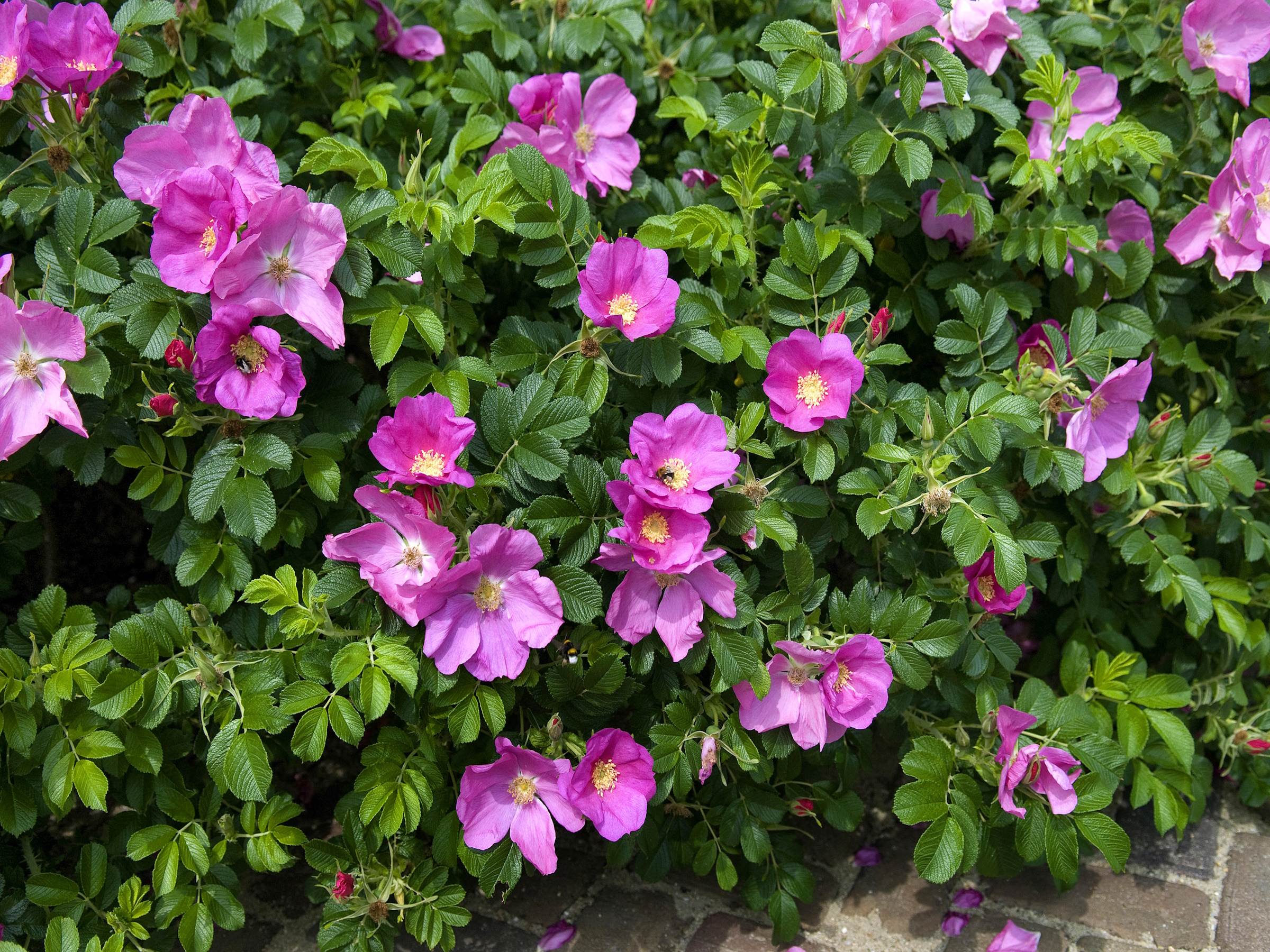
Rosa rugosa is a sturdy rose that can handle high winds and is an excellent hedging plant
You may be surprised to see roses in this list of the best wind-resistant shrubs, but many varieties originate in tough, mountainous areas of the world so they are more than capable of handling heavy weather.
Their stems are flexible, and will bend rather than break in high winds, and their flowers are more resilient than their beauty lets on.
However, you do need to be careful when putting together rose garden ideas for a windy corner of the yard, and bear in mind that the constant battering of gales may stunt their growth to some degree.
Choose varieties with single blooms, rather than multi-petalled flamboyant varieties, and go for shrub, ground cover roses or supple-stemmed climbing roses that can be thinned and tied in, rather than rambling roses that can grow a lot of body that can catch the wind and be blown about.
A wide range of rose plants can be bought at Perfect Plants.
FAQs
How can I protect my shrubs from wind?
Successful growing in a windy yard starts with planting. Make sure your shrubs are deeply planted and well watered in so they quickly get established and are less likely to succumb to wind rock. Mulch afterwards to feed the soil but avoid making the most common mulching mistakes, which can actually damage the health of your trees.
Also ensure plants have adequate support, and keep them well pruned using sharp, clean pruning tools. Avoid common shrub pruning mistakes and aim to create an open, attractive shape that allows the wind to flow through the branches instead of battering them.
Are conifers good for windy gardens?
You would think that conifers are ideal for windy spots as they can produce a dense protective barrier. Low-growing varieties such as creeping juniper can cope with windy conditions. However, as we discovered when we moved to our current home that had a 30ft leylandii hedge at the back of the yard, tall conifers are vulnerable to wind burn.
The side of our poor hedge that bore the brunt of the prevailing wind was dying, brown, skeletal and unsightly - not at all pleasant to look at. So we got rid of it and planted a hedge of bare root hazel, Guelder rose, crab apples, field maple and field roses which not only withstands the wind, but provides flowers, nuts and berries and is great for wildlife.
What plants grow well with wind-resistant shrubs?
Bulb planting trends change from year to year, but they are always an excellent choice to bring color and interest to all the seasons. Think of snowdrops planted in the green, cyclamen and aconites in winter, narcissi, tulips and camassia in spring, alliums and agapanthus in summer and dahlias and canna lilies for the fall.
Low growing hardy geraniums are also a good buy, as are any groundcover plants that will protect the soil from drying out and blowing away. Sea hollies are also excellent as they are tough as you like, thrive in poor soil and are perfect for coastal gardens.
There is a wide variety of wind resistant shrubs that will suit every style and size of yard. They are best planted in the fall or spring, and once the temperature rises, they will grow strongly to provide protection and interest all year through.

Ruth is a Contributing Editor for Homes & Gardens, and formerly Gardening Editor of Amateur Gardening magazine. She is horticulturally trained, with a qualification from the Royal Horticultural Society. Her work for Amateur Gardening, the world's oldest weekly gardening publication, involved matching gardening tasks with each season, covering everything from sowing and planting, to pruning, taking cuttings, dealing with pests and diseases and keeping houseplants healthy. She is an expert in ornamental plants and edible crops, and everything she writes about and photographs is in her own garden, that has been a work in progress since her family moved there in 2012.